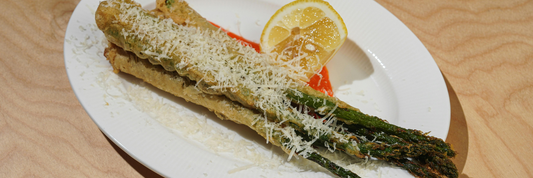Choosing the right surface for food prep can elevate your cooking experience. While both cutting boards and butcher blocks serve as kitchen essentials, their differences in design, materials, and purpose make each uniquely suited to specific tasks. Let’s explore what sets them apart so you can find the perfect fit for your culinary needs.
What is a Cutting Board?
A cutting board is a flat, portable surface used for everyday food preparation tasks such as chopping vegetables, slicing fruits, and cutting bread. Cutting boards come in various materials, including wood, plastic, bamboo, and glass, offering versatility in any kitchen.
Key Features of Cutting Boards:
- Available in a wide range of sizes and shapes.
- Made from materials like wood, plastic, bamboo, or glass.
- Lightweight and easy to store.
- Ideal for a variety of food preparation tasks.
What is a Butcher Block?
A butcher block is a thick, heavy-duty cutting surface designed primarily for tasks like breaking down large cuts of meat. Made from end-grain or edge-grain wood, butcher blocks provide exceptional durability and are gentle on knives. They are larger and more robust than standard cutting boards, making them ideal for professional kitchens or serious home cooks.
Key Features of Butcher Blocks:
- Constructed from end-grain or edge-grain wood.
- Thicker and heavier than cutting boards.
- Designed for heavy chopping, cleaving, and meat preparation.
- Often integrated into countertops or used as standalone workstations.

Cutting Board vs. Butcher Block: Material Comparison
| Material | Cutting Board | Butcher Block |
|---|---|---|
| Plastic | Lightweight, dishwasher-safe, but can develop bacteria in knife grooves | Not typically used |
| Wood | Durable and aesthetically pleasing (maple, walnut, cherry) | End-grain wood provides a self-healing surface, best for heavy-duty use |
| Bamboo | Eco-friendly but harder on knives | Not common due to hardness |
| Glass | Easy to clean but can dull knives | Not used |
Design & Construction: Cutting Boards vs. Butcher Blocks
Cutting Boards:
- Size & Thickness: Typically thin and lightweight.
- Shape Options: Available in rectangular, round, and specialty shapes.
- Portability: Easy to move and store.
Butcher Blocks:
- Size & Thickness: Significantly thicker (1.5 to 4 inches).
- Integrated Options: Often built into countertops or designed as standalone units.
- Weight: Heavier and more robust, offering excellent stability.
When to Use a Cutting Board vs. Butcher Block?
Use a Cutting Board When:
- Performing everyday tasks like slicing bread, chopping vegetables, or cutting cheese.
- Needing a lightweight, easy-to-clean surface for quick kitchen tasks.
- Preparing a variety of food types with easy switching between boards.
Use a Butcher Block When:
- Breaking down large cuts of meat or chopping bones.
- Seeking a durable, stable surface for frequent heavy-duty cooking.
- Creating a long-lasting food prep station in a professional or home kitchen.
Cost Comparison: Cutting Boards vs. Butcher Blocks
| Product Type | Price Range |
| Cutting Boards | $10 (plastic) to $100+ (premium wood) |
| Butcher Blocks | $150 (small) to $1,000+ (high-end models) |
FAQs About Cutting Boards vs. Butcher Blocks
Can I use a butcher block as a cutting board?
Yes, but due to its size and weight, it may be less convenient for everyday use.
Which is better for knives: cutting boards or butcher blocks?
Butcher blocks made from end-grain wood are more knife-friendly and help preserve blade sharpness better than plastic or bamboo cutting boards.
Are butcher blocks more hygienic than cutting boards?
Both can be hygienic if properly maintained. Wooden butcher blocks have natural antimicrobial properties, while plastic cutting boards are easier to sanitize in a dishwasher.
How often should I oil a butcher block?
You should oil your butcher block every 3-4 weeks or more frequently with heavy use.
Which option is better for small kitchens?
Cutting boards are better for small kitchens due to their portability and ease of storage.
Conclusion
Choosing between a cutting board and a butcher block depends on your cooking habits, kitchen space, and maintenance preferences. If you need a lightweight, versatile surface for daily tasks, a cutting board is ideal. However, if you require a heavy-duty, durable option for serious meal prep, a butcher block is a worthwhile investment. Explore your options and find the best fit for your culinary needs!





